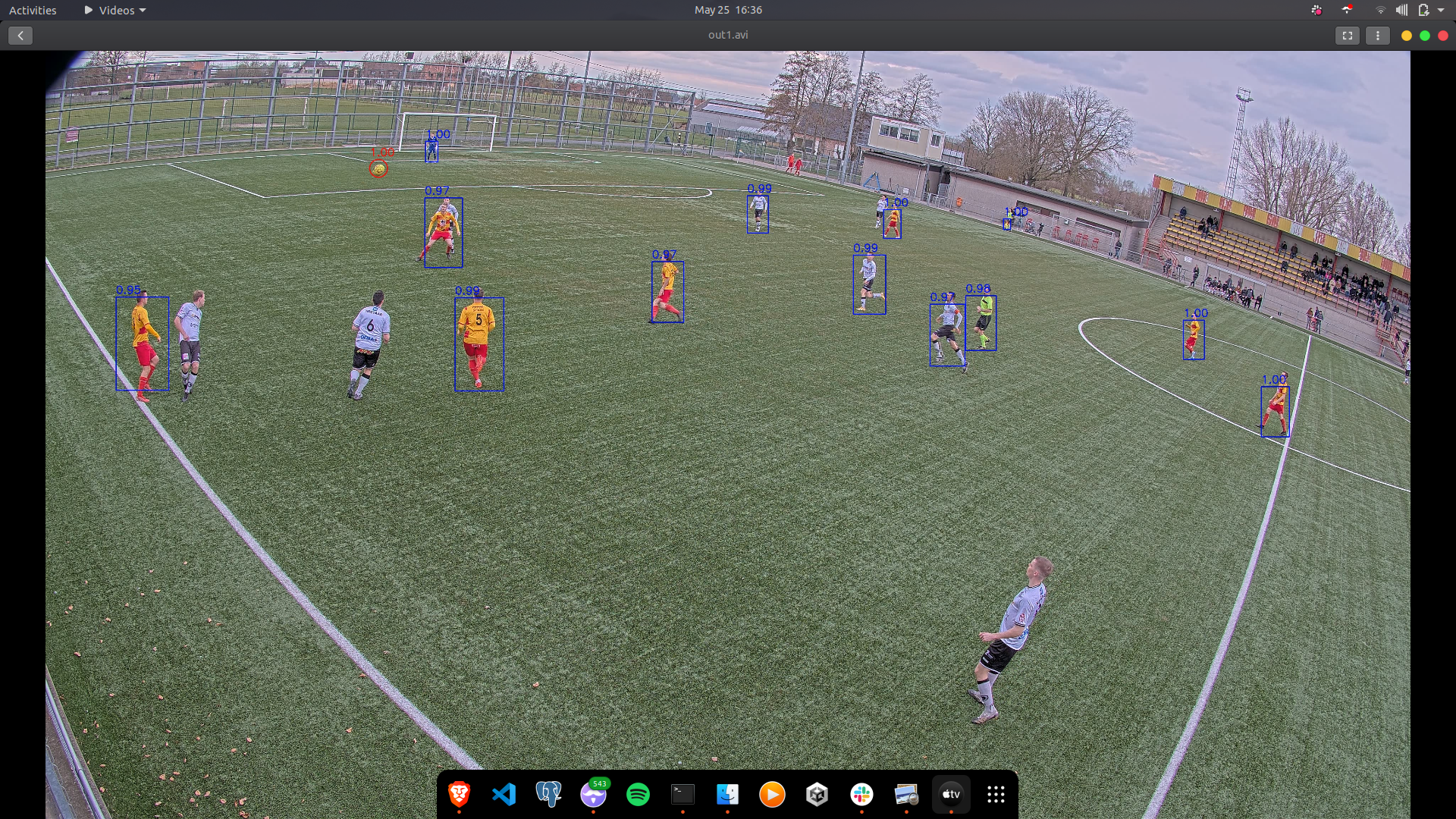Comments (5)

The network is able to regress for the person boxes....If there is anybody out there with a similar problem, please disable the crop augmentation from the training augmentation script. I can put in some time later to understand why the crop augmentation was not working. Probably it is not resizing the bounding box after the crop aug was added or something on those lines....but for now the results are good and we can close the issue
from footandball.
Hi,
I suspect, there's a problem with a training ground truth - maybe there's some error when you convert player bounding boxes to tensors. You can try the following:
- Visualize the ground truth data that comes from the Dataloader. Maybe there's an error in the Dataset getitem or in data augmentation code, and bounding boxes ground truth in incorrectly encoded. Take the bounding boxes data from the batch returned by Dataloder and visualize them, to ensure they are correct.
- Try to train your model with very small training set (one image only). The network should overfit to this tiny training set - the loss should decrease almost to zero and the predictions should be almost perfect. if they are not - I would bet there's a problem with bounding boxes ground truth (or in the procedure to decode the bounding boxes regressed by the network).
from footandball.
Ok I will try them....Also a question: In the paper you have mentioned that the player bounding boxes should have less variance...the camera setup we are using will result in higher variance amongst players in different parts of the pitch...will this architecture predict player boxes of high variance?
from footandball.
In our architecture, a player classifier and regressor use features from one hierarchy level of the backbone network. As an input they use a feature map that has (H/16, W/16) resolution (where H and W are the height and width of an input image). Such a design is not well suited to detect objects with very large variance in the bounding box size. Detectors such as YOLO or SSD use features from different hierarchy levels, bo be able to detect very large objects (e.g. converting most of the image) and much smaller objects.
But I don't know how well our architecture will handle variance in the player bounding box size. It will handle some amount of variance. Unless players occupy a large part of the screen, it should work, But you need to verify it experimentally.
Looking at the screenshot, you've provided to should be able to handle this amount of variance. I'm not sure if it'll be able to differentiate two very small players at the far end of the field - they may come as one detection.
from footandball.
Got it !! thanks a ton....I am performing some experiments on my dataset...I will update you on the regression head shortly
from footandball.
Related Issues (8)
Recommend Projects
-
 React
React
A declarative, efficient, and flexible JavaScript library for building user interfaces.
-
Vue.js
🖖 Vue.js is a progressive, incrementally-adoptable JavaScript framework for building UI on the web.
-
 Typescript
Typescript
TypeScript is a superset of JavaScript that compiles to clean JavaScript output.
-
TensorFlow
An Open Source Machine Learning Framework for Everyone
-
Django
The Web framework for perfectionists with deadlines.
-
Laravel
A PHP framework for web artisans
-
D3
Bring data to life with SVG, Canvas and HTML. 📊📈🎉
-
Recommend Topics
-
javascript
JavaScript (JS) is a lightweight interpreted programming language with first-class functions.
-
web
Some thing interesting about web. New door for the world.
-
server
A server is a program made to process requests and deliver data to clients.
-
Machine learning
Machine learning is a way of modeling and interpreting data that allows a piece of software to respond intelligently.
-
Visualization
Some thing interesting about visualization, use data art
-
Game
Some thing interesting about game, make everyone happy.
Recommend Org
-
Facebook
We are working to build community through open source technology. NB: members must have two-factor auth.
-
Microsoft
Open source projects and samples from Microsoft.
-
Google
Google ❤️ Open Source for everyone.
-
Alibaba
Alibaba Open Source for everyone
-
D3
Data-Driven Documents codes.
-
Tencent
China tencent open source team.

from footandball.